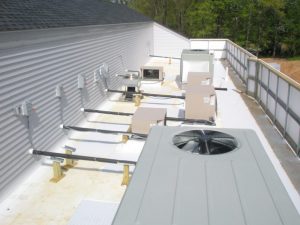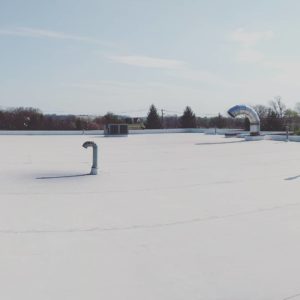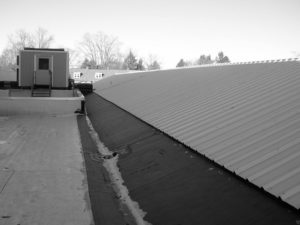If you own or manage a commercial building, you know how important roof maintenance is. Roof damage or failure can cost your business a HUGE chunk of change.

A major problem with your roof can cost more than just the price of repair – it can damage your equipment, inventory, and be dangerous to employees. It can cost you valuable time if your business has to shut down. It’s important to understand your roof so that you can catch potential problems before they come expensive catastrophes.
If your building has a flat rubber or TPO roof, its warning signs are different than they would be for a steep-slope shingled roof. But, most of the roofing advice out there is for residential shingle roofs.
So, how can you become an informed roof owner and monitor your own roof for warning signs? Start by checking these parts of your roof:
UNITS

Anywhere a heating or air unit sits on your roof is a potential problem area. The flashing on the corners can bridge, peeling out of the corner and stretching the roofing material. Look for bridging around all units, as well as any signs of peeling or leaking all the way around units.
PIPES

Pipes that run through the roof are also common leak points. Make sure that the edges of the pipe boot aren’t peeling up, and that the neck of the boot is still tight around the pipe.
SEAMS

Rubber and TPO are installed in large rolls and seamed together. These seams are another area to keep an eye on. The natural expansion and contraction of the roof can place strain on the seams and over time they can begin to pull apart. Test seams by checking for peeling or separation.
PATCHES

If your roof has ever been damaged and patched, the patched places are more vulnerable than the rest of your roof. Make sure its edges aren’t peeling or separating.
LEARN MORE
If to want to learn more, there are a few ways:
You can schedule a roof inspection with a professional roofer to learn more about your specific roof. This is always a good idea, especially if your roof is more than ten years old. A roofer can analyze the status of your whole roof and recommend a maintenance plan that will protect your building. If you’re in OUR AREA, you can CONTACT US to schedule a roof inspection.
If you want to stay up to date on our roofing tips, follow our blog by entering your email in the form below!
Pennsylvania Home Improvement Contractor License (HIC) # PA124258

